Potrebujeme váš súhlas na využitie jednotlivých dát, aby sa vám okrem iného mohli ukazovať informácie týkajúce sa vašich záujmov. Súhlas udelíte kliknutím na tlačidlo „OK“.
ASTM D3424-11
Standard Practice for Evaluating the Relative Lightfastness and Weatherability of Printed Matter (Withdrawn 2020)
Automaticky preložený názov:
Štandardné postupy pre hodnotenie relatívnej svetlostálosť a odolnosť proti poveternostným vplyvom tlačovín
NORMA vydaná dňa 1.2.2011
Informácie o norme:
Označenie normy: ASTM D3424-11
Poznámka: NEPLATNÁ
Dátum vydania normy: 1.2.2011
Kód tovaru: NS-23602
Počet strán: 7
Približná hmotnosť: 21 g (0.05 libier)
Krajina: Americká technická norma
Kategória: Technické normy ASTM
Kategórie - podobné normy:
Anotácia textu normy ASTM D3424-11 :
Keywords:
accelerated exposure, carbon-arc apparatus, color difference measurements, daylight behind window glass, fluorescent lamp apparatus, gray scale, lightfastness, outdoor exposure, printed matter, printing inks, weatherfastness, xenon-arc apparatus, Carbon-arc light exposure, Accelerated aging/testing--paints/related coatings, Color--lightfastness, Color difference measurements, Daylight through window glass, Exposure tests--light, Exterior exposure tests, Fluorescent lamps/lighting, Gray scale
Doplňujúce informácie
| Significance and Use | ||||||||||||||||||||||||||||||||||||||||||
|
Lightfastness or weatherability for specified periods of time is pertinent for certain types of printed matter such as magazine and book covers, posters and billboards, greeting cards and packages. Since the ability of printed matter to withstand color changes is a function of the spectral-power distribution of the light source to which it is exposed, it is important that lightfastness be assessed under conditions appropriate to the end-use application. The accelerated procedures covered in these exposure methods provide means for the rapid evaluation of lightfastness or weatherability under laboratory conditions. Test results are useful for specification acceptance between producer and user and for quality control. The xenon-arc lamp with an appropriate filter system exhibits a spectral-power distribution that corresponds more closely to that of daylight than the carbon-arc. In turn, accelerated tests using xenon-arc apparatus may be expected to correlate better with exposure to natural daylight than do those using carbon-arc apparatus. To accommodate variations in light intensity among days, seasons, locations, or instruments, duration of exposure is preferably expressed as the radiant exposure in specific bandpasses rather than time. In either case, the inclusion of an appropriate control serves to minimize effects of variations in test conditions. Color changes are not a linear function of duration of exposure. The preferred method of determining lightfastness or weatherability is to expose the prints for a number of intervals and to assess the time or radiant exposure required to obtain a specified color difference. For a given printing ink, lightfastness and weatherability or both depend on the type of substrate, the film thickness of the print, and the area printed (solid versus screen). Therefore, it is important that the nature of the test and control specimens correspond to that expected under actual use conditions. Note 2—Specifications D4302, D5067, and D5098 provide useful guides to the lightfastness of pigments in several types of artists' paints after 1260 MJ/m2 total window glass filtered solar radiant exposure (equivalent to about 2 or 3 months' exposure to window glass filtered solar radiation in accordance with Practice G24 at a tilt angle of 45 degrees). However, because of major differences between printing inks and artists' colors, especially in applied film thickness, it cannot be assumed that the lightfastness categories of printed ink films containing these pigments will be comparable to those indicated in the three specifications. |
||||||||||||||||||||||||||||||||||||||||||
| 1. Scope | ||||||||||||||||||||||||||||||||||||||||||
|
1.1 This standard describes procedures for the determination of the relative lightfastness and weatherability of printed matter under the following conditions, which involve exposure to natural daylight or accelerated procedures in the laboratory: 1.1.1 Method 1—Daylight behind window glass, 1.1.2 Method 2—Outdoor weathering, 1.1.3 Method 3—Xenon-arc apparatus with window glass filters to simulate daylight behind window glass, 1.1.4 Method 4—Xenon-arc apparatus with water spray and daylight filters to simulate outdoor weathering, 1.1.5 Method 7—Fluorescent lamp apparatus to simulate indoor fluorescent lighting in combination with window-filtered daylight. 1.1.6 Method 8—Fluorescent lamp apparatus operating with fluorescent cool white lamps to simulate indoor fluorescent lighting. Note 1—Previous versions of this standard included Methods 5 and 6 that are based on enclosed carbon-arc exposures. These methods are described in Appendix X1. The spectral irradiance of the enclosed carbon-arc is a very poor simulation of solar radiation, window glass filtered solar radiation, or the emission of lamps used for interior lighting. In addition, enclosed carbon-arc devices are no longer readily available or commonly used. 1.2 These methods require that a suitable print or other control (reference standard) be run along with the test sample. Color changes due to conditions of exposure may be evaluated by visual examination or instrumental measurement. 1.3 These methods are applicable to prints on any flat substrate including paper, paperboard, metallic foil, metal plate, and plastic film, and are produced by any printing process including letterpress, offset lithography, flexography, gravure, and silk screen. 1.4 The values stated in SI units are to be regarded as standard. No other units of measurement are included in this standard. 1.5 This standard does not purport to address all of the safety concerns, if any, associated with its use. It is the responsibility of the user of this standard to establish appropriate safety and health practices and determine the applicability of regulatory limitations prior to use. For specific hazard statements, see Section 8. |
||||||||||||||||||||||||||||||||||||||||||
| 2. Referenced Documents | ||||||||||||||||||||||||||||||||||||||||||
|
Podobné normy:
Historická
1.6.2011
Historická
1.6.2012
Historická
1.1.2014
Historická
1.12.2010
Historická
1.11.2013
Historická
1.6.2013


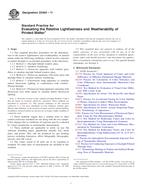
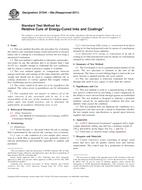 ASTM D7244-06a(2011)..
ASTM D7244-06a(2011)..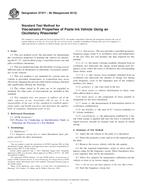 ASTM D7271-06(2012)..
ASTM D7271-06(2012)..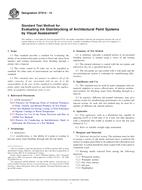 ASTM D7514-14
ASTM D7514-14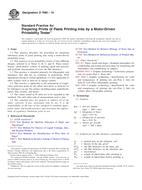 ASTM D7680-10
ASTM D7680-10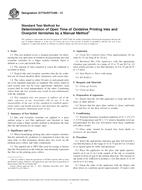 ASTM D7734/D7734M-13..
ASTM D7734/D7734M-13..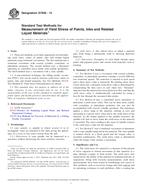 ASTM D7836-13
ASTM D7836-13
 Cookies
Cookies
